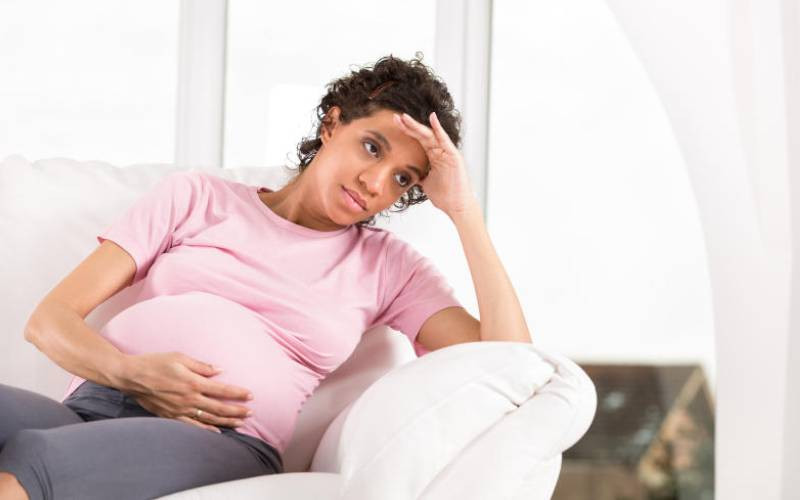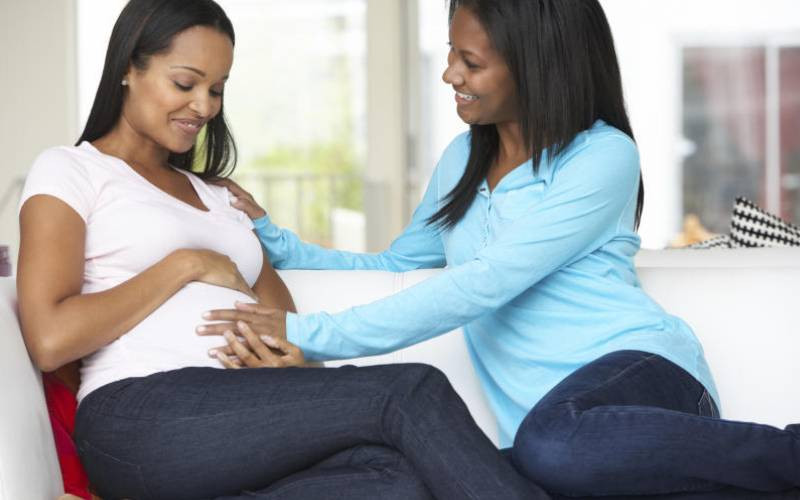
There are plenty of old wives tales out there, but this may be the most accurate way of determining your baby's sex so far. Before ultrasounds were invented, there were some far-fetched theories. There are no shortage of old wives tales which claim to predict your unborn baby's gender.
In those days before ultrasound scans, women came up with a surfeit of imaginative ways to (supposedly) determine if a mum-to-be was carrying a boy or a girl.
Popular examples of enduring pregnancy 'lore' tell you carrying high means you're having a girl, as do mood swings, craving sweets, being sapped of your 'glow' and, oh joy, experiencing skin break-outs.
You may also - wait for it - just be experiencing common pregnancy symptoms, but that takes the fun out of guessing.
However, there may in fact be a way of calculating if you are expecting a daughter.
What's more, it doesn't involve dangling a ring on a piece of string over your tummy to see which way it swings. It's instead rooted in science and a mum-to-be's physiology.
Pregnant
There's a theory that the position of the bump may reveal the sex of the baby (Photo: Getty)
According to a recent study published in the journal Brain, Behaviour and Immunity, there is a relationship between a baby's sex and its mum's immunity.
80 women were monitored over the course of their pregnancy and were examined to see if they showed different levels of immune markers called cytokines based on the sex of the foetus.
That was the main aim of the study, and although it didn't reveal the differences the researchers were looking for, something far more interesting and intriguing came to light.
Principal investigator of the study, Amanda Mitchell is a postdoctoral researcher in the Institute for Behavioural Medicine Research at Ohio State’s Wexner Medical Center.
The ring-on-the-string test told her she was having a girl
She told Kidspot: "While women didn't exhibit differences in blood cytokine levels based on fetal sex, we did find that the immune cells of women carrying female foetuses produced more pro-inflammatory cytokines when exposed to bacteria."
"This means that women carrying female foetuses exhibited a heightened inflammatory response when their immune system was challenged, compared to women carrying male foetuses."
So what does this mean in layman's terms?
The best way to describe these findings are to look at an example taken from the study.
Melissa Fox is a mum-of-two who participated in the study while she was pregnant with her second child, a girl.
Waiting until the 20 week scan is often the norm
As a young girl, Melissa had suffered from allergies which eventually disappeared with age.
However, these came back with a bang during her second pregnancy, resulting in Melissa having to take medication every day, such was the severity.
It's not unusual for women to experience allergy-like symptoms of pregnancy, but what was remarkable about Melissa's story was that these symptoms had not been present at all when she was expecting her son.
The two pregnancies were completely different, from cravings to extremity of morning sickness - and the allergies.
If you can't wait until the big day, these signs are a good indication you're having a girl.
While it's often the case that a womans' pregnancies will differ, the research showed these differences were owing to Melissa's heightened levels of inflammation because she was carrying a girl.
Excessive inflammation can cause sickness and nausea, aches and pains and tiredness - and it can also heighten symptoms of medical conditions like ashtma.
So when you're pregnant, a high level of this inflammation, as well as all the icky side-effects, could very well mean you're expecting a girl.
But at least it's a bit more water-tight than having to binge eat raw garlic cloves to determine the sex.
 The Standard Group Plc is a multi-media organization with investments in media platforms spanning newspaper print
operations, television, radio broadcasting, digital and online services. The Standard Group is recognized as a
leading multi-media house in Kenya with a key influence in matters of national and international interest.
The Standard Group Plc is a multi-media organization with investments in media platforms spanning newspaper print
operations, television, radio broadcasting, digital and online services. The Standard Group is recognized as a
leading multi-media house in Kenya with a key influence in matters of national and international interest.













